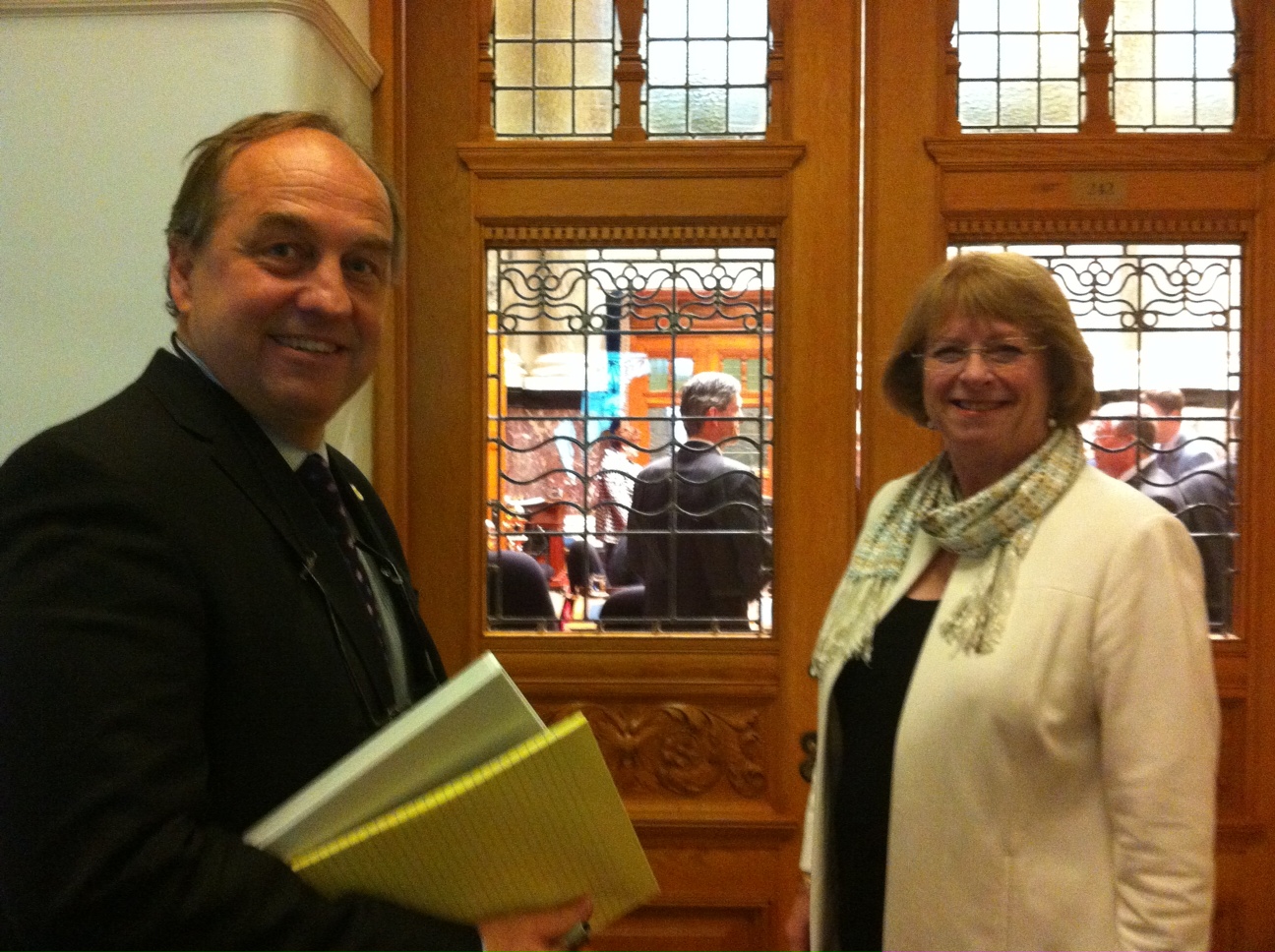Issues & Community Blog - Andrew Weaver: A Climate for Hope - Page 154
Bill 20: Election Amendment Act
Today in the legislature I spoke against Bill 20: Election Amendment Act at second reading. This Bill implements a number of the recommendations made by the Chief Electoral Officer in his October 2014 report. However, only one of the Chief Electoral Officer’s three priority recommendations was implemented, and that concerned providing flexibility in opportunities for advance voting.
The main recommendation of the Chief Electoral Officer was to facilitate youth participation “allowing the provisional registration of individuals when they are 16 years of age. The voting age would remain at 18, with provisional registration becoming an active registration on an individual’s 18th birthday.” This was not implemented. Another recommendation that wasn’t implemented was to provide “greater flexibility to the Chief Electoral Officer to introduce, on a pilot basis, a variety of new voting technologies.”
One egregious addition to the bill not recommended by the Chief Electoral Officer and opposed by the Privacy Commissioner is new language that allowed political parties to obtain a list of voters that indicates which voters on the list voted in a previous general election. This list would be available between general elections.
There is simply no way that this information would assist in improving voter turnout. If we accept that government’s motivation for introducing this bill is to improve voter turnout, then it is done in an incredibly inefficient and ineffective manner, one that requires the concomitant creation of a time machine to travel backwards in time. If, as is far more likely, this information is being gathered to enhance the databases of political parties, then it’s incredibly effective.
My own view is that whether a person votes or doesn’t vote is no one else’s business apart from the voter and Elections B.C. There are many ways of improving voter turnout, not the least of which is offering people something to vote for instead of vote against.
Below is the text of the speech I gave at second reading. I will be voting against the bill at second reading. If it passes then, I will be introducing several amendments at committee stage to ensure that the concerns of the Privacy Commissioner are incorporated into the Act.
Second Reading Speech
A. Weaver: I rise today to speak on Bill 20, the Elections Amendment Act. My speech today will revolve around three key elements of the bill. First, I’d like to discuss government’s apparent decision to give up its fight to better regulate the influence of big money during the pre-campaign period. Second, I’ll outline and speak in support of several aspects of this bill that follow from the recommendations made by the Chief Electoral Officer.
Finally, I’ll express my serious reservations about parts of the bill where, under the guise of increasing voter turnout, government has made it easier for political parties to build up their databases. Low voter turnout is a serious issue and deserves far more than a token effort to resolve it. I’ll touch upon this more later on in this speech.
Pre-Writ Spending
First to pre-writ spending. I’ll deal with each of these in turn, beginning with the pre-campaign period. This is a complex issue that deserves some context.
In 2001 British Columbia became the first jurisdiction in Canada to introduce fixed election dates. Since then, we’ve been followed by seven other provinces as well as by the federal government.
With fixed election dates came new concerns about the role of money in politics. Many commentators warned of a free-for-all occurring in the days and even the months before the writ was officially dropped. This turned out to remarkably accurate. For evidence of this, just turn on Hockey Night in Canada and count the number of political ads that are aimed at the federal election that is still many months away.
In 2008 the province tried to address this new challenge and introduced an Election Amendment Act quite different from the one before us today. That bill set out financing limits for political organizations as well as third parties in the 60 days before the official start of the election.
Spending limits are incredibly important in a vibrant democracy. They work to promote equality in our political discourse. They ensure that wealthy voices don’t drown out the rest and retain confidence in our electoral system.
An important component of any electoral spending law is a limit on third-party spending. Without these limits, political parties can easily circumvent the rules by creating special interest groups to convey their message for them. The limits also prevent the possibility of wealthy individuals or organizations dictating the terms of public discourse and, by extension, the election itself.
One portion of the previous bill, the pre-writ spending limits for third parties, was struck down by the B.C. appellate courts. Their concerns were not with the principle of pre-campaign spending limits but, rather, with the heavy-handed way government put them into place.
The court ruled that the government’s definition of what constituted election advertising was far too broad. Instead of just stopping campaign advertising, it would have muffled commentary from any third parties, regarding the budget, throne speech and government legislation in a pre-campaign period that included the sitting of the Legislature.
Government rewrote their legislation, submitted it to the Court of Appeal and once again faced a ruling that their language was far too broad. It is in response to this history that I presume we see the Election Amendment Act, 2015, repeal the pre-writ spending not just for third parties but, rather, for all political parties as well.
It seems that since government’s attempts to create rules that cover a period before the writ is issued have so far failed the court tests, they are levelling the playing fields to ensure that political parties are not disadvantaged with limits that others do not share.
While I agree wholeheartedly with the government’s early attempts to control spending in the pre-campaign period, I recognize that it has been difficult to properly enforce these regulations, given the court’s ruling, but I would like to quote from the court opinion of Hon. Justice Ryan.
“I am not persuaded that there are not ways of dealing with election advertising that do not interfere with political speech while Legislature is in session. For example, the fixed election date might be changed to a different time of year, the campaign period extended or the definition narrowed. These are matters for the Legislature to determine.”
Government’s attempt to control election spending was an important step on an issue that is pivotal to democracy. I must wonder, however, if we are not walking away from this effort prematurely. I would urge this House to take the advice of Hon. Justice Ryan. With a bill like this, we have an opportunity to tighten their definitions and resubmit legislation. With this bill, we have an opportunity to once again redefine the election process and allow every voice to be heard more clearly.
Positive Elements
There are a number of positive elements in this bill. With that said, the elements of the bill that I support are as follows.
In October B.C.’s Chief Electoral Officer released a report on legislative recommendations. These were primarily commonsense measures that could bring about positive change. Government has put many of these into place in the Election Amendment Act before us today.
For instance, they have changed the rules surrounding advanced voting. By giving greater flexibility to Elections B.C., this bill would provide more opportunities for rural voters to cast their ballots early.
Government has also loosened the restrictions on leadership races with only one candidate. Before this, a candidate acclaimed with no opposition, and therefore no expenses, would still have had to fill out an expense report.
Finally, government has fixed inconsistencies in the vouching process. As it stands now, a person vouching for their friend has to prove their identity, while a person claiming to be a relative does not. By changing the vouching process, government has brought more confidence to our electoral process.
Sequence Numbers
However, these were not the only recommendations made by the Chief Electoral Officer. During his consultation, the Chief Electoral Officer discussed solutions to an incredibly important issue facing British Columbians today and, indeed, Canadians as a whole. That is the issue of low voter turnout.
In the last election only 55 percent of eligible British Columbians voted, so 45 percent had a chance to speak, and they stayed silent. Cynicism, apathy, anger, a feeling that there was no one to vote for unless a “none of the above” box was added to the ballot — whatever their reason for silence, it is clear that action must be taken.
With this in mind, the Chief Electoral Officer advised government to take some action. He asked them to authorize Elections B.C. to give candidates a list of voter sequence numbers at the end of each advanced voting day as well as the election itself. The bill before us has followed the Chief Electoral Officer’s recommendation in this regard and codified an already existing practice.
While everyone in this House can recognize the need to address low voter turnout, it’s important to tread carefully. The information citizens give when voting should be used with the greatest care, and this bill must safeguard this responsibility.
These concerns are echoed by the Privacy Commissioner, Elizabeth Denham. I would like to quote Ms. Denham’s letter to the Minister of Justice.
“I fully support the need to address low voter participation, and I recognize that the purpose of sections 96 and 99 amendments is to increase voter turnout in a manner that is controlled by Elections B.C. and fair to all candidates. It’s important to ensure that personal information disclosed to candidates during advanced and general voting is only used for this purpose [and] I would also recommend that Bill 20 require that voter participation information disclosed pursuant to sections 96 and 97 be destroyed following the election.”
It’s with this in mind that I’ve put two amendments on the order paper. Following the advice of the Privacy Commissioner, these amendments would require the voter information gathered by candidates in the new ways laid out in section 96 and 97 to be destroyed following the election.
I recognize the government’s rationale with respect to these sections. I simply urge them to move forward with the utmost caution when it comes to disclosing any voter information.
In fact, my own view is that whether a person votes or doesn’t vote is no one else’s business apart from the voter and Elections B.C. There are many ways of improving voter turnout, not the least of which is offering people something to vote for instead of vote against.
Political Parties
Privacy concerns also render section 6 of this bill very worrisome. This section would require Elections B.C. to offer the list of voters to registered political parties. This list would include their name, address and the new addition, advanced under this bill, of whether or not they actually voted. It did not come from the Chief Electoral Officer’s recommendations, and it has faced serious criticisms from the Privacy Commissioner. To quote Ms. Denham once again:
“The original reason the Legislature authorized Elections B.C. to compile a list of voters was for the purpose of administering elections. I am deeply concerned that the proposed amendments allow for other uses and expand the already broad ability of political parties to collect information about voter participation.
“It would also certainly exceed what British Columbians anticipate when they provide their name to Elections B.C. I do not believe there has been any public consultation on this expanded use of the voters list.”
I recognize that much of this information is already collected by scrutineers and, as such, available to political parties. I recognize government’s argument that this simply codifies existing practices and is intended to increase voter turnout. However, I feel that these arguments fail to recognize one simple fact: this information is given out after an election.
Hon. Speaker, I’m sure you’ll agree with me that it will be very difficult to get people to vote in an election that has already happened. If we generously prescribe government’s motivation to getting out the vote, then it is done in an incredibly inefficient and ineffective manner, one that requires the concomitant creation of a time machine. If, as is far more likely, this information is being gathered to enhance the databases of political parties, then it’s incredibly effective.
Giving voter turnout information to political parties after an election seems to contradict the government’s claims that this has anything to do with increasing voter turnout. One of the reasons cited in discussions of this provision notes that with decreasing engagement, some political parties are facing a shortage of volunteers. This is putting pressure on political parties to find scrutineers and other election day volunteers to help them get out their vote.
I have significant issues with this line of reasoning. In my view, the use of technology in elections should be used to enhance the relationship that a candidate and a political party has with the voters. It can’t help facilitate an ongoing relationship with far more voters than was previously possible.
However, if we allow it — that’s technology — it can also boil the incredibly important human interactions that are essential in a thriving democracy down to data points, and this we must be concerned about this.
To maintain a connection to the electorate requires hard work, especially in a time when voter engagement is on the decline. If we truly want to address voter disengagement, let’s do it in a way that offers new engagement opportunities, not by providing political parties with information about the electorate that boils it down to data points so that they don’t have to worry about working hard to gather it themselves.
Furthermore, this provision is especially discriminatory towards independent candidates. Right now only political parties will be able to take advantage of it. There’s no reason for independent candidates, like the esteemed member for Delta South, to be boxed out of the process even further. A variety of voices gives life to debate in the House. The act, whether intentional on, provides a huge advantage to political parties at the expense of independent voices.
I’d urge government to retract this section entirely. It’s poorly constructed, it did not come through consultation, and it does not serve the interests of British Columbia.
Failing that, I’d urge them to adopt another amendment that I’ve added to the order paper. It would not fix the act entirely, but it could be an important step in the right direction. This amendment would address one of the Privacy Commissioner’s most important concerns and put stringent conditions on the use of voter participation information. It would allow Elections B.C. to regulate the use of information under the definition of electoral purposes and explicitly prohibit the use of information for commercial purposes or the disclosure of information to any organization or public body.
Voter Turnout
Now let’s turn to voter turnout. Ostensibly, the aforementioned new disclosure is made in order to increase voter turnout. If this really is the case, government has missed its mark entirely, sacrificing privacy without fixing the problem. Government needs to get serious about dealing with low voter turnout and address it in a way that actually has the evidence to back up its claims. It deserves serious discussion and debate, and it deserves to be the very core of this bill.
With that in mind, there are certainly ideas I would love to have seen in this bill that could take practical steps toward increasing voter turnout. One example is an idea that was actually raised by the official opposition in the last election and has been recommended by the chief elections officer: bring in voter register to 16. By lowering registration age, we would empower Elections B.C. to work with driver’s licence programs as well as schools.
Every single high school student in the province of British Columbia is required to take social studies in grade 11, and a large part of the class is learning about democracy and citizenship. This unit could culminate in registering to vote, with the importance of this duty fresh in the minds of the students taking the course.
We should have all British Columbians registered by the time they can vote; 18- to 24-year-olds have the lowest voter registration rates, and voting is habit-forming. A generation that votes when they’re young is far more likely to do so when they’re older. If we can impact change at a young age, it will carry forward in the years to come.
In fact, perhaps we should be reducing the voter age to 16. If 16-year-olds are allowed to drive, perhaps we should initiate a conversation concerning whether they should be allowed to vote as well. After all, the youth of today live the consequences of the decisions we make. It’s important that we engage them early in our democratic institutions.
This would be a positive step forward, but alone it is not enough. We need to start a serious conversation on how to rebuild public engagement and convince British Columbians to let their voices be heard. We should have consultation from a wide variety sources and forum that draw bold legislation that can impact real change. This should start with the introduction of a ban on union and corporate donations, as is the case federally. Neither unions nor corporations vote. People vote.
Conclusion
In conclusion, there are many things that our electoral system requires, many ways to breathe new life into our democracy. We need spending limits in the weeks leading up to a campaign. Groups with the most money should not be able to drown out every other voice. If we’re going to hear the diverse set of voices that make up a dynamic campaign, we need to keep the drone of money down.
At the same time, we need to carefully balance spending limits with people’s right to criticize or compliment government and its actions. In its previous laws on pre-writ spending, the government’s goals may have been noble, but its delivery was flawed. This prognosis rings unfortunately true for the legislation before us.
Getting out the vote is remarkably important to any true democracy, but it cannot come at the expense of the rights democracy is designed to protect. There is no way I can justify trading our privacy for a weak attempt — an unjustified attempt — at increasing engagement. If government is serious about bringing more people to the polls, they should make a concerted effort to do so. They should engage stakeholders, work with experts and build consensus. If they brought forward a bill which promised to effect real and positive change in this area, then I would support it wholeheartedly.
As it stands, I cannot support this token effort when real action is needed. I cannot support an attack on privacy when entrenched political parties are the only ones who will benefit. For these, I cannot support this bill and will be voting against it at second reading.
Video of Second Reading Speech
Select Standing Committee on Health Won’t Examine MSP Reform
Over the course of the last few months I have been working to raise awareness about the regressive approach British Columbia is taking to fund health care via flat-rate MSP premiums. I’ve been pressuring both the government and the official opposition to support a more progressive approach like that in place in Ontario.
I’ve written about this earlier and tabled a petition in the legislature of 6,662 British Columbians who agreed. Furthermore, during question period, I asked the Minister of Finance if the government would empower the Select Standing Committee on Health to examine innovative, progressive ways of revising how MSP premiums are charged. The Minister responded that he believed the mandate of the committee was sufficiently broad for “members of the committee, and those that they might invite in, to have the kind of conversation that the member is alluding to”.
Following up on the Minister’s response, I formally wrote to the Chair of the Select Standing Committee on April 17 asking two specific questions regarding the possibility of initiating a conversation with respect to the funding of MSP in British Columbia.
I received a response to my letter today.
The response was, to say the least, most disappointing. The Chair of the committee stated that “they consider only those matters that are referred to them by the Legislative Assembly”. Given the Minister’s response to my question during question period, this statement is most perplexing.
What’s even more troubling is that further in the letter, the Chair of the committee states:
“The Committee is currently working to identify potential strategies to ensure the sustainability and improvement of our health care system while ensuring its financial sustainability.”
Moving MSP premium funding from a regressive to a progressive system of funding is precisely one of the key ways we can ensure the financial sustainability of our healthcare system. I am astonished that the Committee has apparently not recognized this.
For those interested, the Select Standing Committee on Health has the following members:
Linda Larson Liberal, Boundary-Similkameen (Chair)
Judy Darcy NDP, New Westminster, (Deputy Chair)
Donna Barnett Liberal, Cariboo-Chilcotin
Dr. Doug Bing Liberal, Maple Ridge-Pitt Meadows
Sue Hammell NDP, Surrey-Green Timbers
Richard T. Lee Liberal, Burnaby North
Dr. Darryl Plecas Liberal, Abbotsford South
Jennifer Rice NDP, North Coast
Bill Routley NDP, Cowichan Valley
Dr. Moira Stilwell Liberal, Vancouver-Langara
Child and Youth Mental Health in British Columbia
This is the first in a seven week series that will examine the topic of child and youth mental health in B.C. As this is a complex and multifaceted topic, I will be narrowing my focus to a few popular beliefs and areas of concern that I have witnessed in my role as MLA. The purpose of this series is to debunk these beliefs, increase awareness of these concerns, end the stigma of mental health in our society and provide opportunities for you to impact what is happening in your community.
Over the last two years in my role as MLA it has become apparent that a central challenge we are facing, both locally and provincially, is that of addressing the mental health needs of youth. Through first hand experiences shared by constituents and the research conducted over a period of several months by my office I have begun to realize how limited the understanding of this issue is. Moreover, I have become concerned about the popular beliefs that underpin conversations and thinking about mental health.
Over the next several weeks I will be releasing a series of posts that will examine the topic of adolescent mental health in our region. My goal with this series is to debunk these dominant beliefs, increase awareness of these areas of concerns, and decrease the stigma of mental health in our society. We will also offer action items that you as individuals can undertake to impact what is happening in your community.
Popular Belief One: Mental Health is not a mainstream issue
Reality: Mental health is as mainstream as any health or social issue in our society today – perhaps more so. It is so mainstream, that you would be hard-pressed to find any individual that has not been impacted by mental health challenges in some way, whether it be directly or indirectly.
According to the Mental Health Commission of Canada (MHCC), by the time people reach 40 years of age, 50% of people in Canada will have had or have a mental illness. But it is not just the people who experience mental health problems that are impacted by them. When we include families and caregivers, mental health problems will impact almost every Canadian at some point throughout their lifetime.
However, challenges related to Mental Health not only put an immeasurable burden on the individuals and families facing them head-on, they also place a heavy weight on society. One study found that in Ontario, the burden of mental illness and addiction is one and a half times higher than all cancers put together and more than seven times that of all infectious diseases.
Similarly, when taking into account health care costs, lost productivity and reductions in health-related quality of life, the economic cost alone of mental health challenges is estimated to be $51 billion per year in Canada.
Popular Belief Two: Mental Health is not a youth issue
Reality: Surpassed only by injuries, mental health challenges in youth are ranked as the second highest hospital care expenditure in Canada.
Today, more than 6.7 million Canadians (1 in 5) are living with a mental health challenge. 75% of these mental health problems occur before the age of 25, while 50% develop by age 14. In fact, young people aged 15 to 24 are more likely to experience mental illness than any other age group.
It is estimated that 10-20% of Canadian youth are affected by a mental illness or disorder. While at the same time, at least 3.2 million youth between the ages of 12 to 19 are at risk for developing a mental health challenge.
Here in British Columbia the numbers are not any better. According to the Ministry of Children and Family Development, approximately 15% of children and youth (140,000) in B.C. experience some sort of mental health problem. And just as troubling, it is estimated that less than 30% of youth who need mental health services ever access them, significantly increasing the chances that these challenges will carry-on into adulthood.
Understanding the true prevalence and scope of mental health challenges is the first step to reassessing how we as a society approach the topic of mental health as a whole. With an underfunded system focused primarily on the treatment of disease, we find ourselves fighting against mental illness instead of striving for mental well-being.
Weekly Action Item
This week’s action item is simple, yet it is perhaps the most important thing you can do to support the mental health and well-being of yourself and others – Get Informed.
Educate yourself about what mental health, and mental ill-health, really mean: What is mental health? How can we promote and achieve mental well-being? What is mental illness? What are signs and symptoms of mental illness? How can mental health challenges materialize in day-to-day life? How can you support someone struggling with mental health challenges? These are just a few of the questions that I hope you will all seek to understand over the next week.
To assist you in this endeavor you can find a wealth of resources online. Below I have provided links to just a few of them:
Amyotrophic Lateral Sclerosis and the ALS Society of BC
Today was my turn to read a member’s statement in the house. I took the opportunity to highlight the impressive work being done by the ALS Society of B.C. to promote ALS awareness, treatment and research.
There are somewhere between 2500 and 3000 Canadians presently afflicted by ALS. More generally, ALS strikes about 2 per 100,000 people each year. My first experience with ALS was while I was a graduate student at Cambridge University. When leaving a class I literally stumbled into and then onto Stephen Hawking who was being brought in to give a lecture by one of his graduate students. The father of one of my son’s friends has ALS and the father of one my son’s teachers also had ALS.
My Statement
Amyotrophic Lateral Sclerosis or ALS is a debilitating, progressive neurological disease that leads to the death of neurons that control voluntary muscles. Each of us in this chamber probably knows of at least one person who has struggled with this disease. In my case, it’s three.
Honourable Speaker, 2014 was a very busy year for the ALS Society of B.C.
Prior to last year’s Ice Bucket Challenge (which I had the distinct honour of participating in), the society found it challenging to raise awareness about ALS. They found it challenging to attract the type of funding required to advance ALS research. These challenges were literally ‘washed away’ temporarily in August last year. And a new era of hope has begun.
Three years ago the Society established a five-year goal to raise an additional $2 million for ALS research.
Remarkably, by itself, the 2014 Ice Bucket Challenge raised nearly that amount through the generosity of British Columbians. And the ALS Society of B.C. directed 100% of this windfall to ALS research. As a result, five new research grants have already been awarded in Canada, including one to Dr. Charles Krieger at Simon Fraser University for his studies concerning the use of bone marrow cells to deliver single chain antibodies in ALS.
In British Columbia, we are extremely fortunate to have some of the best ALS specialists in the world caring for patients at the GF Strong Rehabilitation Centre. The Province’s continued partnership with the Centre is crucial to providing the best quality of care service.
On August 6th, members of the International Alliance of ALS/ Motor Neurone Disease (MND) Associations will be staging events around the world to report back on how the funds from the Ice Bucket Challenge have been invested.
However, it is important to note that despite this recent fundraising success, ALS is still not a treatable disease. More patients are being diagnosed daily, and the cost of equipment and critical services increase every year. Until there is a cure, we cannot afford to let up.
Honourable speaker, June is ALS awareness month. There will be many events taking place across BC during this month. And if you’re looking for information, it can be found at the ALS BC website: www.alsbc.ca .
Video
Challenges Facing Mining in British Columbia
Introduction
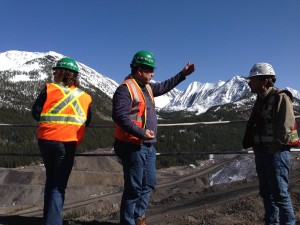 Earlier this week I published an account of my recent trip to the Kootenays where I visited a number of mining operations, and met with people in local communities. Mining is a key economic sector underpinning BC’s economy. The industry directly employs 10,720 British Columbians, contributes $8.5 billion to BC’s GDP and a further $511 million in tax revenues to provincial coffers. Numerous small communities throughout our province depend on mining for their survival.
Earlier this week I published an account of my recent trip to the Kootenays where I visited a number of mining operations, and met with people in local communities. Mining is a key economic sector underpinning BC’s economy. The industry directly employs 10,720 British Columbians, contributes $8.5 billion to BC’s GDP and a further $511 million in tax revenues to provincial coffers. Numerous small communities throughout our province depend on mining for their survival.
While we have much to celebrate about British Columbia’s mining industry, there are also a number of challenges that must be taken seriously. The BC Government has a critical role to play in ensuring that the standards that regulate this industry are kept up to date, and that in addition to the economic benefits mining provides our province, its social and environmental impacts are being accounted for seriously.
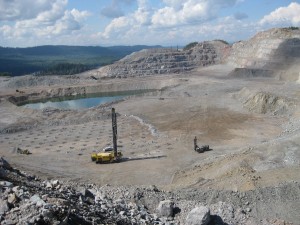 To explore some of the challenges facing this industry – and to highlight some of the solutions that are readily available, I want to turn to two specific and related issues. First, I want to explore how mines manage their tailings ponds. I will specifically look at what we have learned since the Mount Polley tailings pond breach.
To explore some of the challenges facing this industry – and to highlight some of the solutions that are readily available, I want to turn to two specific and related issues. First, I want to explore how mines manage their tailings ponds. I will specifically look at what we have learned since the Mount Polley tailings pond breach.
The second issue I will examine concerns the enforcement and regulatory functions of government and whether adequate funding is being provided by government to ensure that it is managing the environmental and social consequences of mining operations.
Impacts of the Tsilhqot’in decision
 Before diving into these issues, I think it is first important to acknowledge that for the mining industry in BC to continue to succeed, and do so in way that is environmentally and socially responsible, the BC government must ensure it is addressing the requirements placed on it by the Tsilhqot’in decision. We are already seeing examples of how this decision may affect mining investment. It was announced earlier this week that the BC Government bought back 61 coal licences from a mining company in the Northwest of the province, in order to provide a longer window for the BC government to engage in more meaningful government-to-government negotiations with the Tahltan First Nation.
Before diving into these issues, I think it is first important to acknowledge that for the mining industry in BC to continue to succeed, and do so in way that is environmentally and socially responsible, the BC government must ensure it is addressing the requirements placed on it by the Tsilhqot’in decision. We are already seeing examples of how this decision may affect mining investment. It was announced earlier this week that the BC Government bought back 61 coal licences from a mining company in the Northwest of the province, in order to provide a longer window for the BC government to engage in more meaningful government-to-government negotiations with the Tahltan First Nation.
Whether or not this specific policy tool — the re-purchasing of mining licences — becomes commonly used by the BC government, the status quo of mining development is likely to change. The Tsilhqot’in decision made it clear that First Nations have significant say, if not an outright veto, over developments on their land. Last summer the Tsilhqot’in First Nation established new rules for mining development on their titled land. These rules require companies to minimize negative impacts and provide revenue sharing with the community.
Mining companies who wish to develop new mines in British Columbia will need to put an even greater focus on consulting, and ultimately addressing the concerns of not only the BC Government, but First Nations who may have inherent title rights to the land.
Learning from Mount Polley
The mining industry in British Columbia was rocked last summer when the tailings pond at Mount Polley breached its impoundment dam, and released almost 25 million cubic meters of tailings and waste water into the Hazeltine Creek, and down into Quesnel Lake.
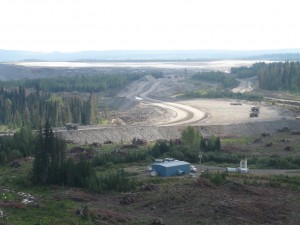 I wrote about this breach when it first happened, and after visiting the mine site and the surrounding communities, I explored in detail what had happened, and what some of the consequences were likely to be. Finally, in January of this year, the Independent Expert Engineering Investigation Review Panel published their report on the Mount Polley Breach. This Panel was empowered to investigate and report on the cause of the failure of the tailings pond facility that occurred on August 4th, 2014 at the Mount Polley Mine. In addition, they were asked to provide recommendations regarding how such an incident could be avoided in the future. It is these recommendations that I will focus on.
I wrote about this breach when it first happened, and after visiting the mine site and the surrounding communities, I explored in detail what had happened, and what some of the consequences were likely to be. Finally, in January of this year, the Independent Expert Engineering Investigation Review Panel published their report on the Mount Polley Breach. This Panel was empowered to investigate and report on the cause of the failure of the tailings pond facility that occurred on August 4th, 2014 at the Mount Polley Mine. In addition, they were asked to provide recommendations regarding how such an incident could be avoided in the future. It is these recommendations that I will focus on.
The Mount Polley tailings pond breach has shattered public confidence in government and industry ability to adequately protect the natural environment during mining operations. Regaining public trust and confidence is perhaps the greatest challenge facing the mining industry. First Nations, the Alaskan Government and Environmental groups have all raised similar concerns. How industry and government collectively respond to the Mount Polley breach will be critical in rebuilding this trust. And an ongoing examination of how mines are managing their tailings and waste, as well as a determination as to whether or not these reflect best practices, will almost certainly be one of key elements of moderating the concerns of British Columbians.
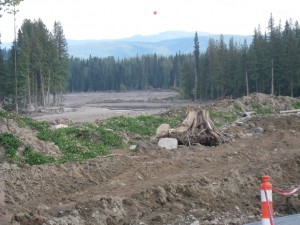 The Expert review panel touched on this point at the start of Section 9 of their report. Section 9 – entitled “Where Do We Go From Here” – explored how the BC mining industry can use best practices and best available technologies (BAT) to reduce failure rates to zero.
The Expert review panel touched on this point at the start of Section 9 of their report. Section 9 – entitled “Where Do We Go From Here” – explored how the BC mining industry can use best practices and best available technologies (BAT) to reduce failure rates to zero.
In the introduction to this section, the Panel rejected the concept of a “tolerable failure rate for tailings dams”, citing concerns that this would institutionalize failure. To quote from their report: “First Nations will not accept this, the public will not permit it, government will not allow it, and the mining industry will not survive it”.
A similar concern was voiced this week by Alaskan government, industry leaders and First Nations, who were in Victoria to meet with Minister’s regarding their concerns about the scale of development taking place in the British Columbia.
The tailings breach at Mount Polley was cited as having raised concerns about the potential impacts on the fishing industry in the region. The Alaskan delegation also felt that the review process in British Columbia was inadequate and not placing enough focus on potential cumulative impacts.
Interestingly both the Expert Review Panel and the group from Alaska pointed to the need to change the way that tailings are managed in this province.
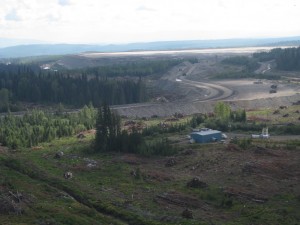 The panel established three conditions that addressed the instability that is created when mines use dual-purpose impoundments, storing both water and tailings. Best available technology would dictate that where possible these two waste products need to be stored in separate facilities that are specifically designed to prevent tailings releases. Critically, this panel also noted that economic considerations cannot be allowed to be the dominant factor in determining what is feasible – the costs of another accident far outweigh the implementation of best practices and technology.
The panel established three conditions that addressed the instability that is created when mines use dual-purpose impoundments, storing both water and tailings. Best available technology would dictate that where possible these two waste products need to be stored in separate facilities that are specifically designed to prevent tailings releases. Critically, this panel also noted that economic considerations cannot be allowed to be the dominant factor in determining what is feasible – the costs of another accident far outweigh the implementation of best practices and technology.
Following the establishment of the Best-Available-Technology (BAT), the Expert Panel made the following recommendations:
- “For existing tailings impoundments: Constructing filtered tailings facilities on existing conventional impoundments poses several technical hurdles. Chief among them is undrained shear failure in the underlying saturated tailings, similar to what caused the Mount Polley incident. Attempting to retrofit existing conventional tailings impoundments is therefore not recommended, with reliance instead on best practices during their remaining active life.
- For new tailings facilities: BAT should be actively encouraged for new tailings facilities at existing and proposed mines. Safety attributes should be evaluated separately from economic considerations, and cost should not be the determining factor.
- For closure: BAT principles should be applied to closure of active impoundments so that they are progressively removed from the inventory by attrition. Where applicable, alternatives to water covers should be aggressively pursued.”
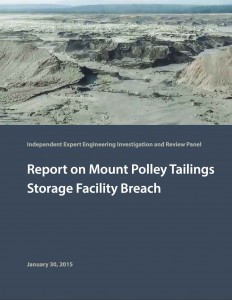 The BC Government has been somewhat responsive to this report. In mid-March they announced new interim rules for tailings ponds which would require companies seeking to build a mine in BC to include the best-available technologies for tailings facilities in their application. The Ministry of Mines are currently completing a review of mining regulations that will eventually establish the new way of doing business in BC.
The BC Government has been somewhat responsive to this report. In mid-March they announced new interim rules for tailings ponds which would require companies seeking to build a mine in BC to include the best-available technologies for tailings facilities in their application. The Ministry of Mines are currently completing a review of mining regulations that will eventually establish the new way of doing business in BC.
However in response to calls from Canadian and American groups to end the use of water based storage facilities, the Minister of Energy and Mines suggested that the expert panel’s bottom line is about reducing water storage of mine waste where you can, and reducing the risk by increasing safety factors. This statement, I fear, betrays a lack of commitment to the true underlying issue highlighted in the report – that the status quo cannot continue and that we must throw out any notion of acceptable risks. I share the frustrations of these groups that we have failed to see an open and transparent commitment to the recommendations of the Expert Report.
This process cannot be taken lightly by government. The Mount Polley breach was devastating to the community of Likely, and even today uncertainty exists as to the full extent of the environmental, social and economic costs that are faced by residents. Evidence of this uncertainty can be found in a recently research paper in Geophysical Research Letters that points to the possibility of ongoing and long-term environmental impacts from the spill on aquatic life. At the very least, long term monitoring of water and sediments in Quesnel Lake will be important.
The solutions are there — they are contained in the path forward highlighted by the Expert Panel. British Columbians deserve government to ensure that it establishes a truly credible mining regime in British Columbia, one which commands the confidence of all those who would feel its impacts. It is only under such a regime, where companies are responsible for the environmental and social impacts of their developments, that mining can be truly successful in our province.
This brings us to the second related issue facing this industry – Government’s ability to regulate and enforce the standards they set for the industry.
Professional Reliance
In 2001 after the BC Liberals were elected to their first term, they began a comprehensive core review to cut the size of government. Premier Campbell asked all government departments to prepare scenarios as to what it would look like with 20%, 35% and 50% cuts to spending. As a direct consequence of government downsizing, technical expertise within the civil service became a casualty. Instead of having technical expertise in house, the government moved towards wide scale use of Professional Reliance in the permitting process. Under the Professional Reliance approach, the Ministry relies on the judgment and expertise of qualified experts hired by a project proponent.
What is particularly important to note is that in March 2014, the Office of the British Columbia Ombudsperson released a scathing report criticizing the Professional Reliance model with respect to streamside protection and enhancement areas. The report, entitled The Challenges of Using a Professional Reliance in Environmental Protection – British Columbia’s Riparian Areas Regulation made 25 recommendations, 24 of which the government agreed to accept.
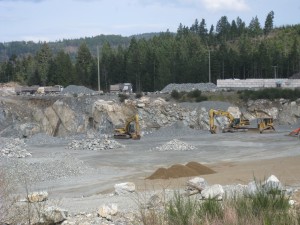 My own personal view is that the government’s approach to follow the Professional Reliance model is fraught with difficulties. The role of the government is to protect the public interest. When government is making decisions solely based on a project proponent’s expert opinion, it is very troubling. Imagine a judge in a court of law only listening to the expert opinion on one side of a case (plaintiff or defendant) and not allowing expert opinion to be submitted from the opposing side.
My own personal view is that the government’s approach to follow the Professional Reliance model is fraught with difficulties. The role of the government is to protect the public interest. When government is making decisions solely based on a project proponent’s expert opinion, it is very troubling. Imagine a judge in a court of law only listening to the expert opinion on one side of a case (plaintiff or defendant) and not allowing expert opinion to be submitted from the opposing side.
There is no doubt that mining plays a very important role in our economy. Mining provides us with the basic elements with which we have built British Colombia into a prosperous and successful jurisdiction. However, the mining industries’ importance to our economy does not disconnect it from its responsibility to conduct itself in a way the is both environmentally and socially responsible. The Expert Review panels report made it clear that the status quo is no longer acceptable and that change is needed. However, for industry to embrace this change, the BC government needs to step up to the plate. The lack of funding for the compliance and enforcement sections of our resource and environment ministries is putting us at risk of another accident. Furthermore, if we expect the mining industry to take the Expert Review panel’s recommendations seriously, we also need to be convinced that government takes them seriously as well.

